Making A House A Home: Interior Design Tips From The Experts
From balancing color schemes to furniture placements to lighting decisions, professional interior designers are the ones to go to for a well-decorated, comfy home. However, they can be quite pricey to hire, and not everyone can afford to get the best in the field. Not to mention the chances of communication errors that can cause your vision of your home to be “lost in translation.” Therefore, a better idea would be to design and decorate yourself. Unfortunately, the outcome of designing ourselves wouldn’t look as great as it would if it were to be designed by a professional. Don’t worry; we’ve got your back. Here are some foolproof interior design secrets shared by some professional interior designers that you could use when designing your home.
1. Asymmetric Designs
One common mistake that many homeowners and newbies in interior design make is thinking symmetrically designed rooms would look absolutely stunning. This is not always the case; this setup occasionally looks too robotic and can lack the warmth a home needs.
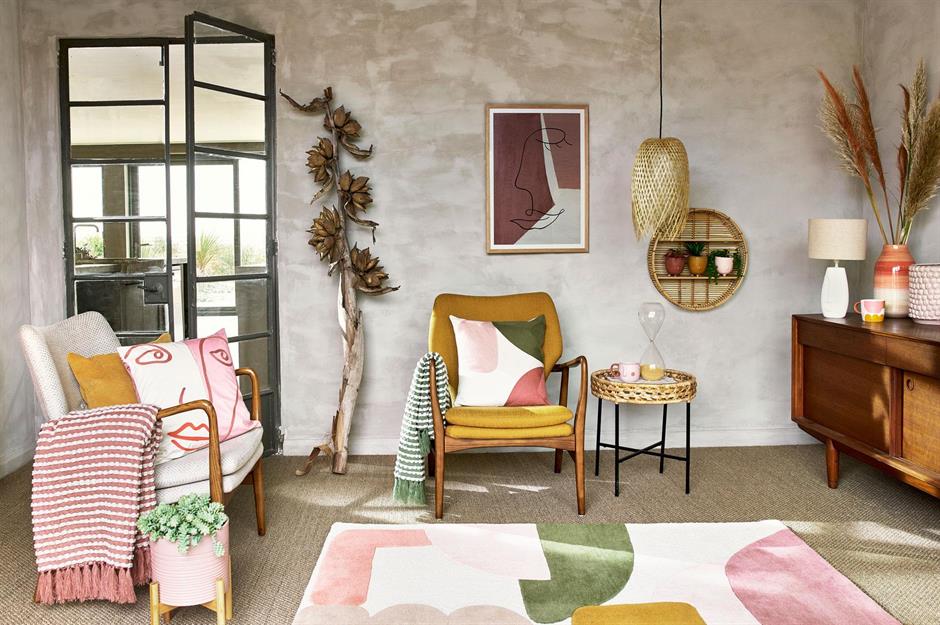
Therefore, a simple fix would be to incorporate asymmetrical designs while decorating your space; mismatched furniture, off-center wall decorations, and textured decorations help give the human eye something interesting to look at, which gives the effect of elevating boring symmetrically decorated rooms.
2. Crown Moldings
Alternatively, you could add crown moldings to add a little something to your living space without being too loud. Crown moldings, or cornices, are decorative plaster that comes in different sizes and shapes that run between your walls and ceilings.
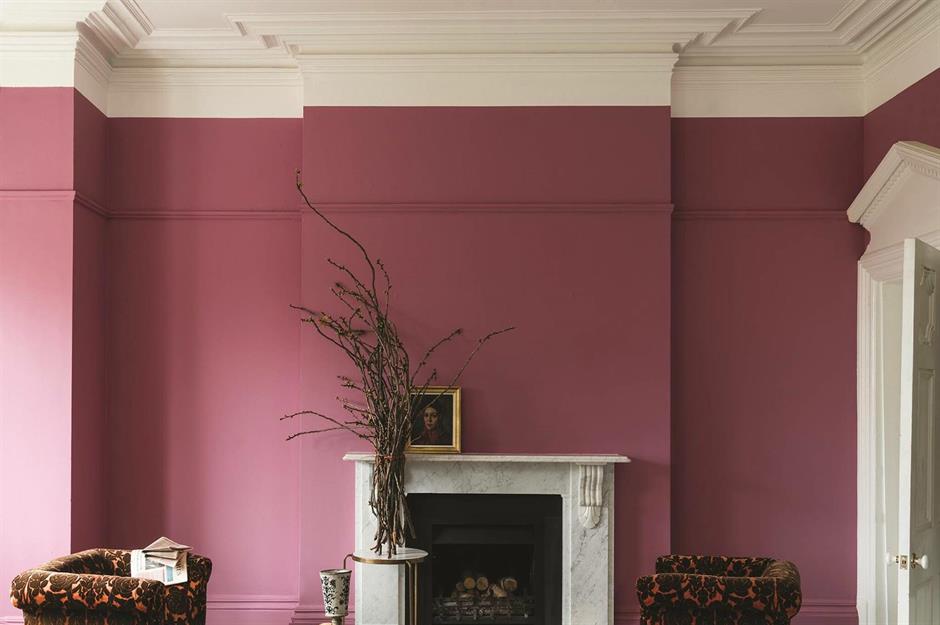
It is more commonly seen in older houses, but adding this feature to your home could easily upgrade the original plain and ordinary room. Additionally, it gives your home a more traditional vibe which is rather special. There are several styles to choose from.
3. Plan Thoroughfares
Another mistake that is not only made by non-designers but also newbies in the interior design field is cramming the room with too much furniture or decorations without leaving sufficient space for you and your guests to move around comfortably.
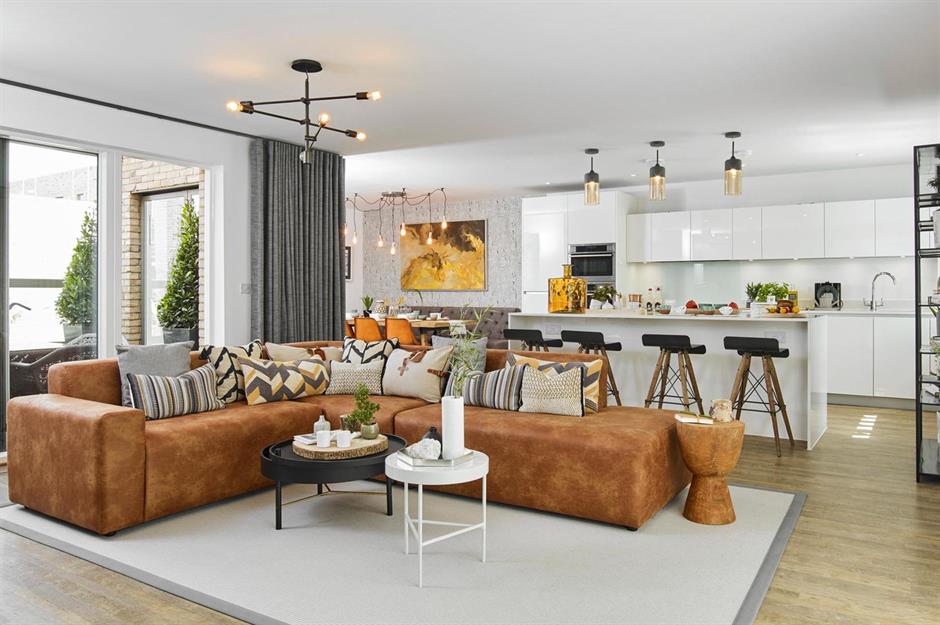
Keeping that in mind, be sure to plan thoroughfares; this should always be the first step to decorating or designing your home. Thoroughfares are normally at least 90cm wide, which is the perfect width to fit two persons at once.
4. Floor Plans
While you’re planning for those thoroughfares, why not make a floor plan? Develop these plans beforehand as they help ensure that there’s enough space for you and your guests to move around all the lovely furniture of your humble home.
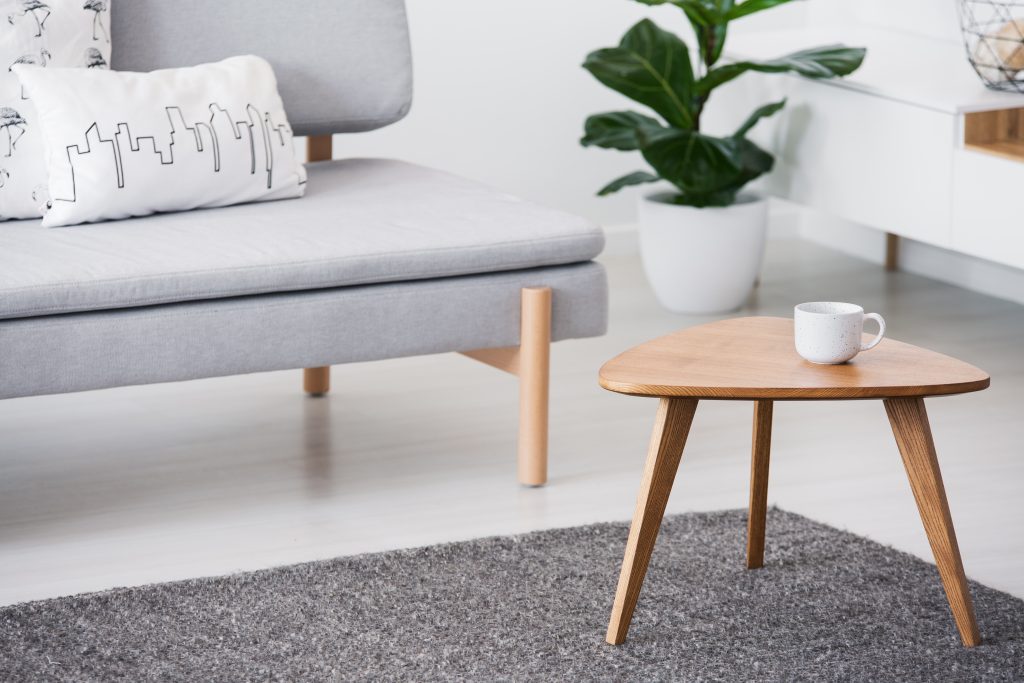
It’s best to leave at least 45cm between each piece of furniture; this is the perfect space that allows everyone ample room to move while not having to shout to each other or stretch for your cup on the coffee table.
5. Line of Sight
We also like to look out for furniture out of the line of sight; this means placing the TV so high that watching it strains your neck or a kitchen counter that is too short that you’d have to bend your back every time you cook.
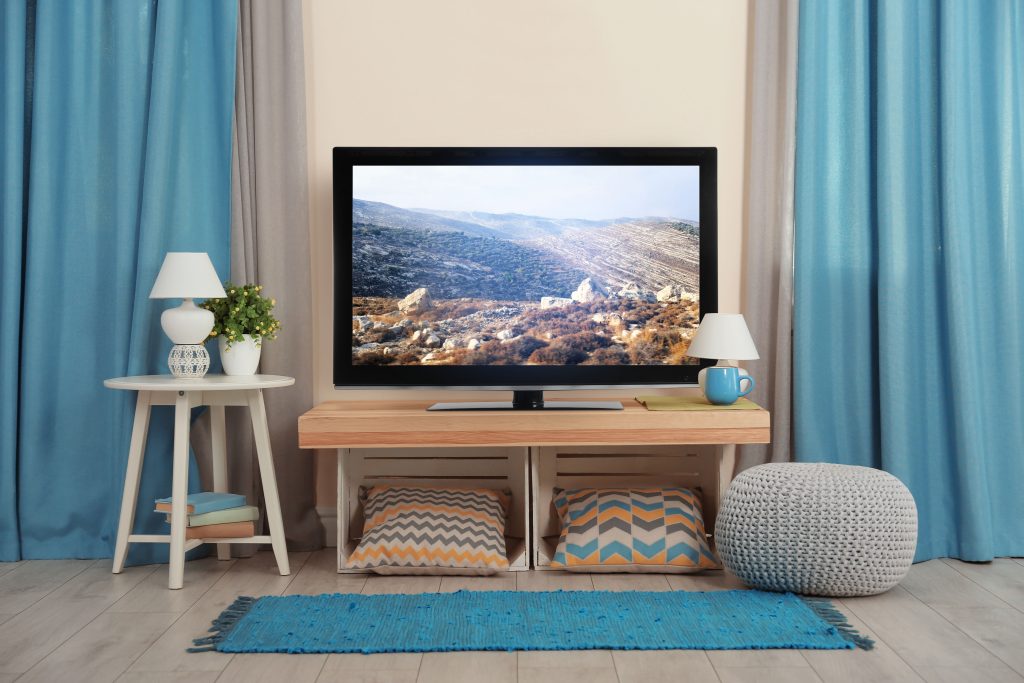
To avoid this, make sure you’re designing your place around your line of sight. If you’re in the living room, you should place the TV at the level of your head when you’re sitting down; the TV should be 1.5 times its diagonal span away from your couch.
6. Natural Light
Furthermore, we occasionally forget to let in natural light, which makes your home dark, depressing and affects the appearance of some colors. Thus, it would be best if you always remembered to look at the room’s lighting before painting it.
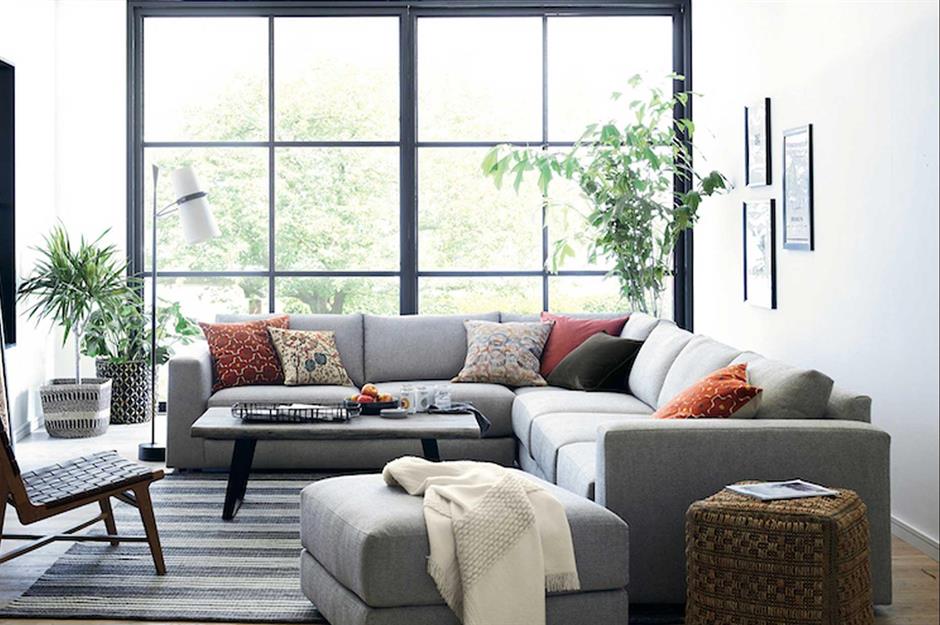
South-facing rooms generally get more natural light, whereas north-facing rooms are darker; this is why the same color in two different rooms gives off a different hue. Windows are a big help with natural light, so try to fit them in.
7. Indoor Lighting
While natural light is an important aspect in determining the tones and shades of the colors in your rooms, indoor lighting is just as crucial as natural light. Whether your home is bright and cheerful or dim, it all depends on the lighting.
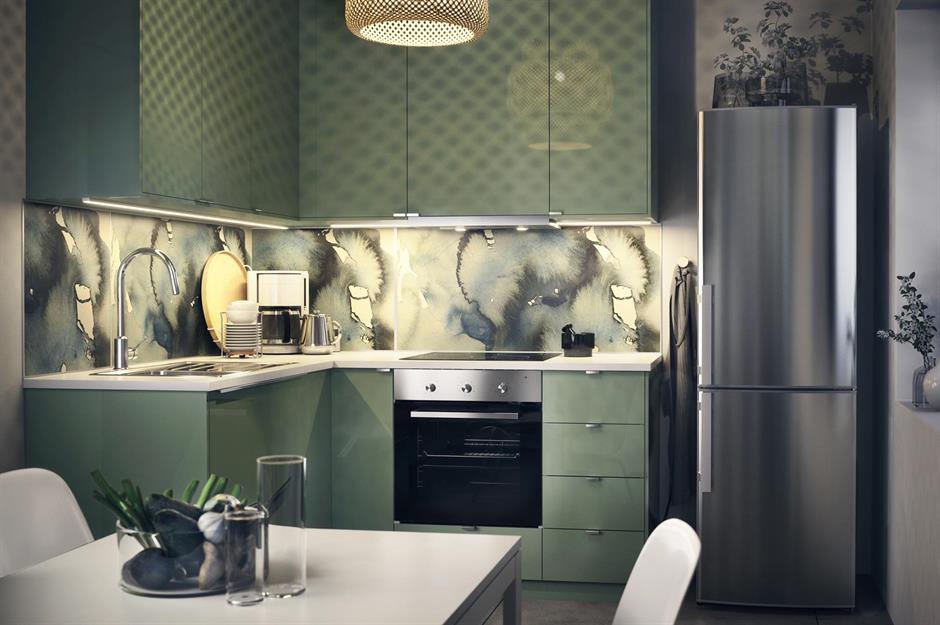
Therefore, plan every light, switch, and socket that you will install before starting to decorate the space. When that’s done, be sure to choose the right color and brightness for your rooms; bedroom lighting should be slightly dimmer for a more relaxed feel.
8. Dining Room Measurements
One other common mistake is pushing back dining room measurements and leaving this to the very last minute; this would make the dining area too cramped and unable to fit a dining table that fits you and your whole family.
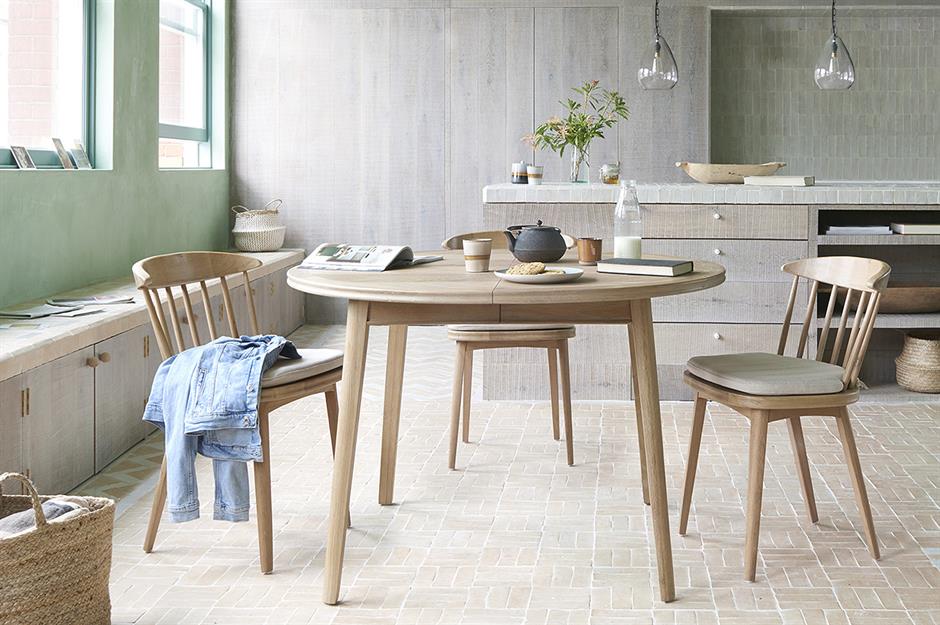
The perfect table should have a height of 74cm, 45cm leg space, 65cm width between each seat, and 75cm space between the wall and table. It would also avoid having you and your guests knocking elbows and bumping the wall while getting up from the table.
9. Order Samples
When it comes to balancing color schemes, it is rather difficult for us to pick colors that work well together, mainly because there are so many shades to each particular color. Various shades of the same color work very differently with different colors.
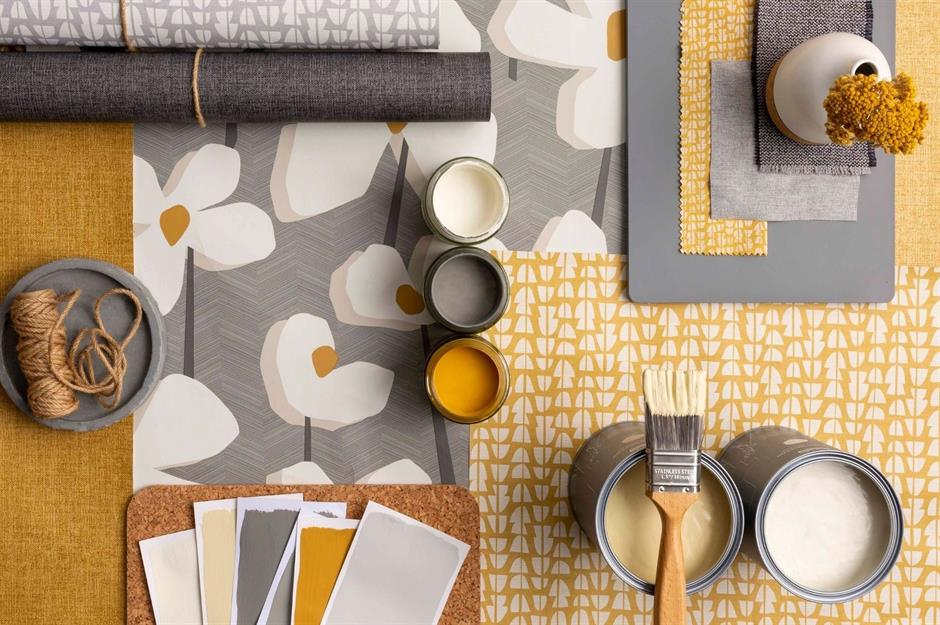
So, one simple thing to do to ensure that the colors we picked match would be to use color samples. Furthermore, get fabric samples of curtains and tablecloths and lay them with the color samples to ensure they go well together.
10. Paint Swatches
Other than using samples, it would be best to have your painters do a paint swatch before committing to a color; this is exactly like buying a makeup foundation where you’d have to try the colors on to determine which one suits you best.
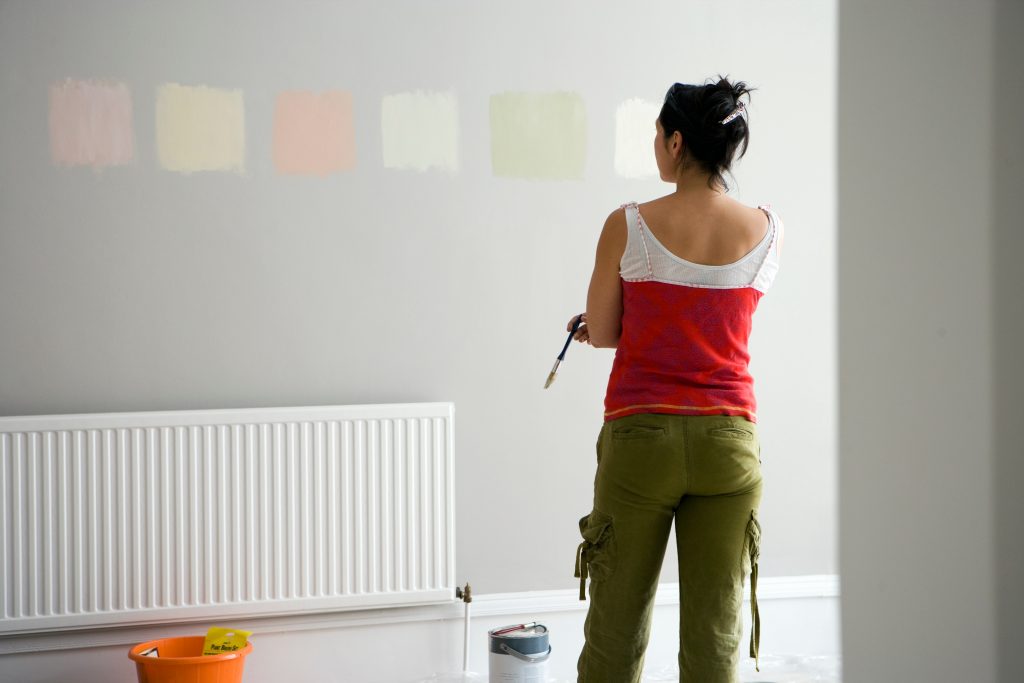
Try to paint small portions of the wall with the paint you’ve chosen and observe it under different lighting and in all the corners of the room. For a mess-free alternative, try painting on a piece of A4 paper and move it around.
11. Paint the Shutters
Picking out the right kinds of fabric and color to dress your window up can be quite the challenge as we’re not professionals. There are thousands of fabrics and colors to choose from, and we want our choice to fit in well with the others.
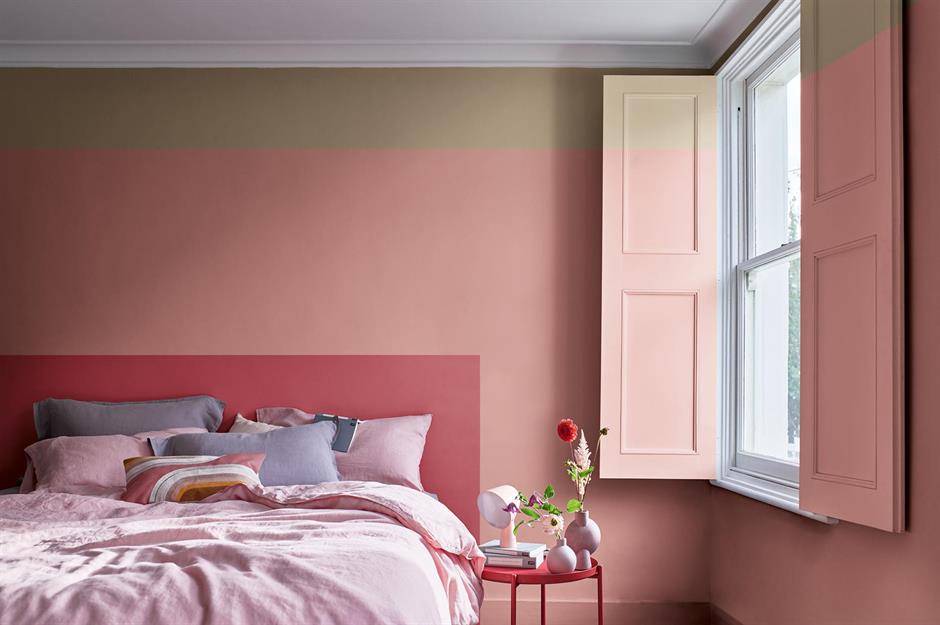
Consequently, try painting the shutters if your home has them; you could use the same colors as the walls or try a two-tone effect which is the current trend. This simple trick pulls the shutters and the room altogether and makes it look exquisite.
12. Balancing Color Schemes
Balancing color schemes is pretty complicated, or at least, it can be. Non-designers often scratch their heads the most when it comes to making sure everything matches, but there’s no need to worry. Here is a fail-safe solution to the problem.
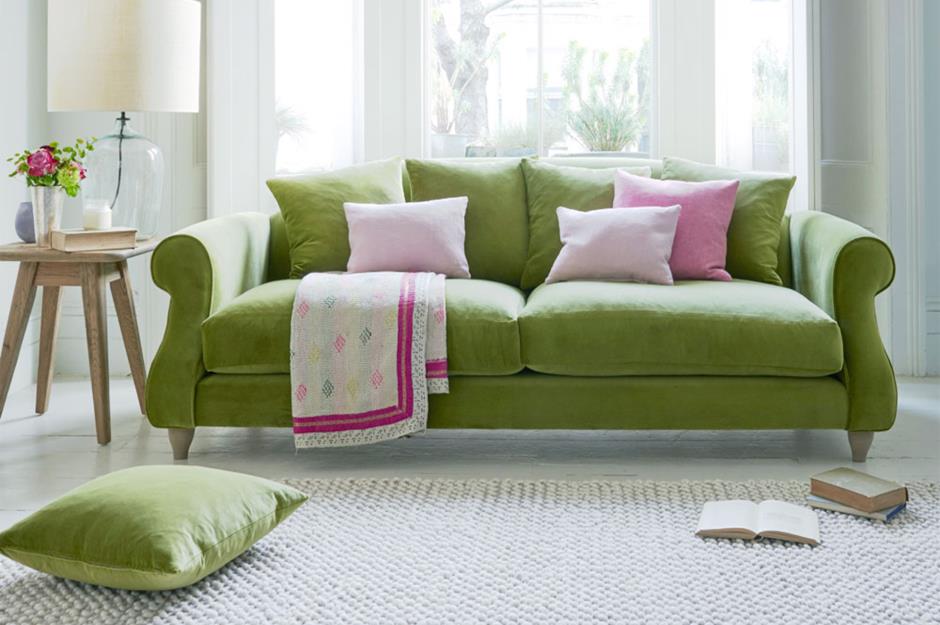
If you have three colors you’ve set your eye on, stick to decorating 60% of the room with the dominant color, 30% with the secondary color, and 10% with the accent color. If you want to add another, split it with the secondary or dominant color and never the accent.
13. Layer Tonal Shades
As mentioned above, balancing color schemes can be tricky mainly because we don’t know which colors go together and which clash. Therefore, the easiest solution to this problem would be to design your home in the same color but with different shades.
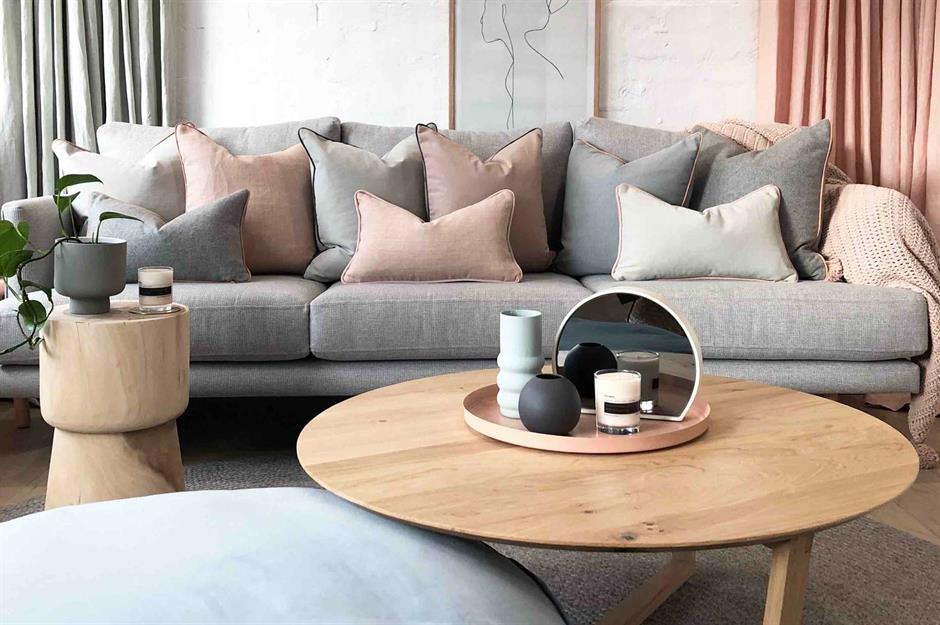
Using multiple shades of one particular color gives your home a more put-together and minimalistic look. You could start by using cushions of different shades and hues to dress your couch, then move on to larger spaces if you’re satisfied.
14. Wheel of Color
Colors that are incompatible with one another would make your home look like it was designed like a child dressing themselves for a playdate. Color wheels can be a huge help when it comes to this. Take your time and consider hat you envisioned.
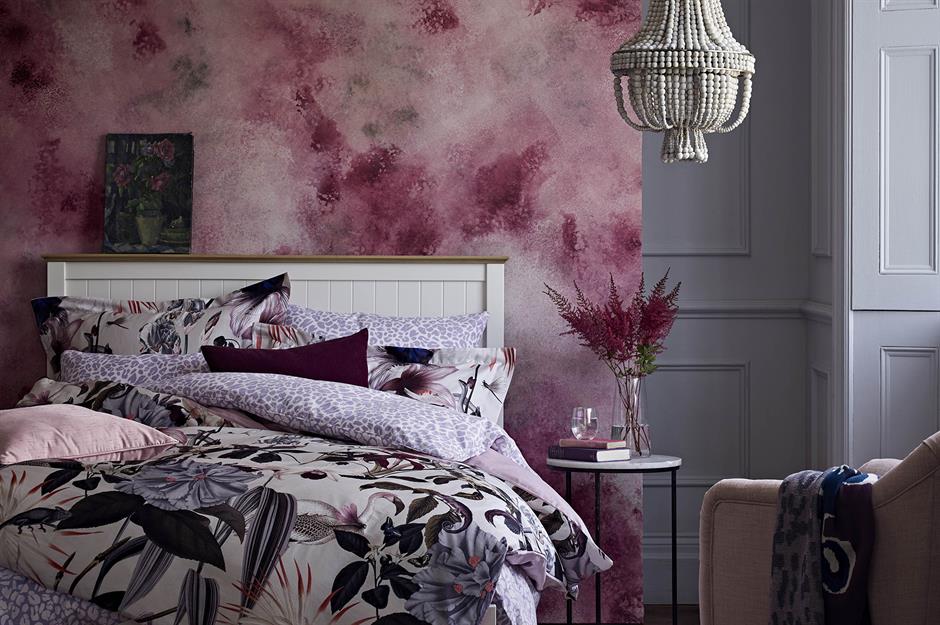
You’d be able to plan beautiful pairings because color wheels help you see which colors work well together and which don’t; colors on opposite sides of the wheel are complementary colors, while those that sit next to each other are analogous colors.
15. Back to Basics
If you really don’t know what colors themes to design your home around, you can always go back to the basics, such as cream, white, and grey. This is relatively easier to choose from as the choice of colors has been narrowed.
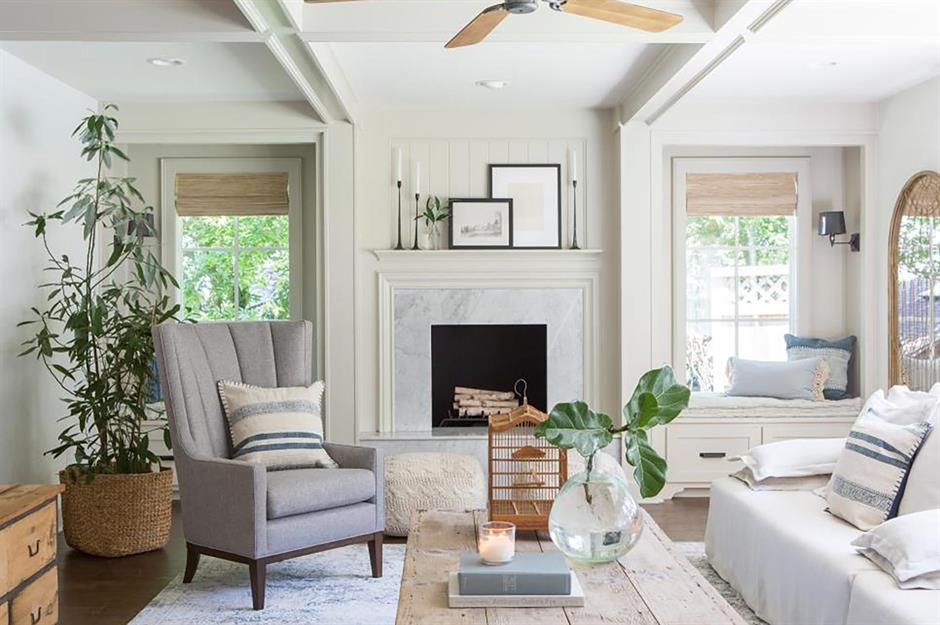
Interior design guru Joanna Gaines wrote in her book “Homebody: A Guide to Creating Spaces You Never Want to Leave,” that crisp white walls are the easiest to work with because they generally go with everything, meaning you can get extra creative with the decorations.
16. Black Interior
Another basic color option is black, but this is often ignored by homeowners because there’s a misconception that all black interior makes the space look small, closed in, and dreary. However, this is not true at all; it is actually the opposite.
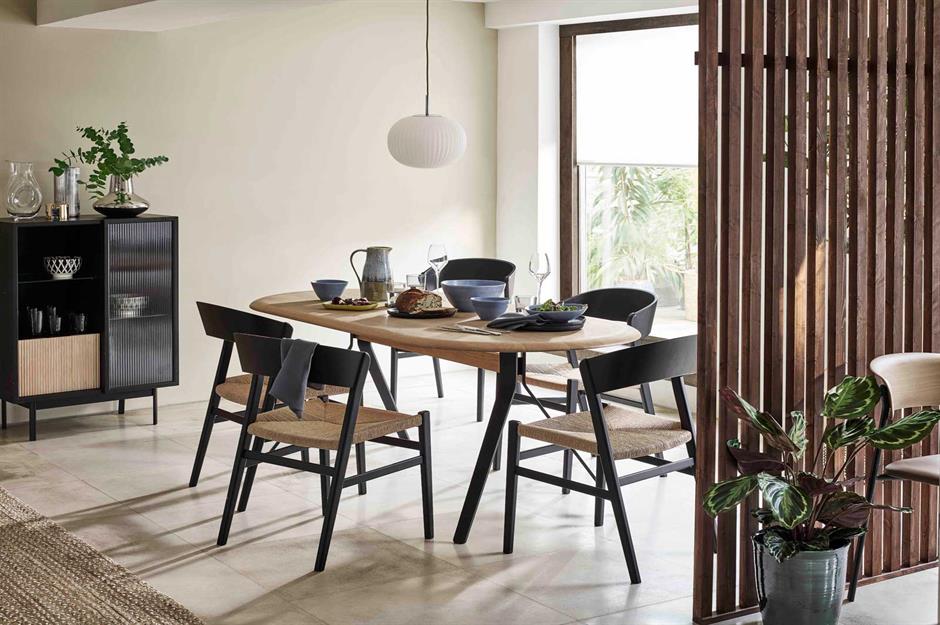
Professional interior designers often use black to make a particular space seem bigger by putting the darkest tone where you’d want to “enlarge.” The idea is to use black against a pale backdrop for contrast that adds a striking punch.
17. Embrace Dark Colors
Speaking of an all-black interior and the misconceptions that follow, you’re probably thinking of painting the walls bright white to reflect a little white into a room full of black. Unfortunately, this would be the cause of a grey-toned room that is somewhat gloomy.
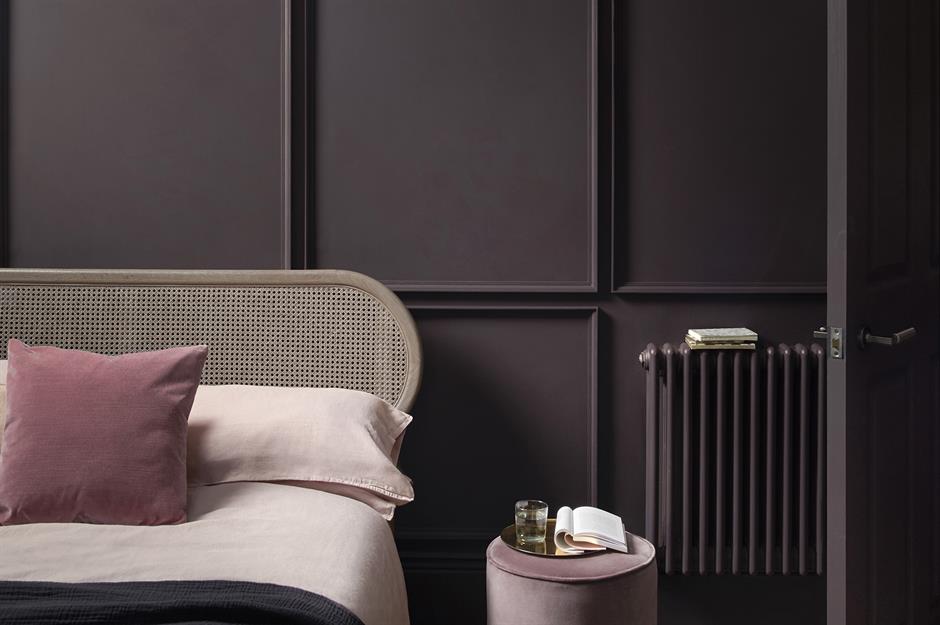
One solution to this is to embrace the dark colors! Paint your room in dark hues, but don’t forget to add bits of bright elements such as decorations, pillows, and flowers for a pop of color that lightens the mood.
18. Pop of Color
Although going back to basics is a great tip that provides more room for creativity, this could make the room look too bland as everything is basically neutral tones. An easy solution to this is to add pops of color to the room.
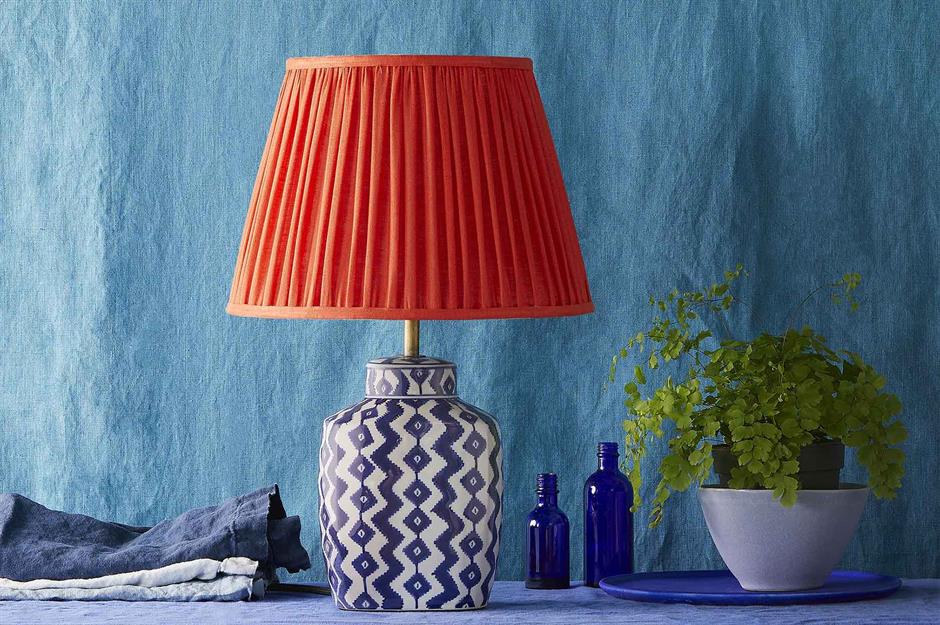
Interior designer Beata Heuman suggests adding a bit of cherry red as it can finish off the room even if it seems incompatible with the rest of the furniture. If you’re not particularly bold, try adding a bright lampshade that isn’t too big but still has the same effect.
19. Color Block Walls
Alternatively, use color block walls to add nice color accents to rooms with basic schemes. This tip allows you to add some brightness to an entire wall instead of only a few small items in the room set around as decoration pieces.
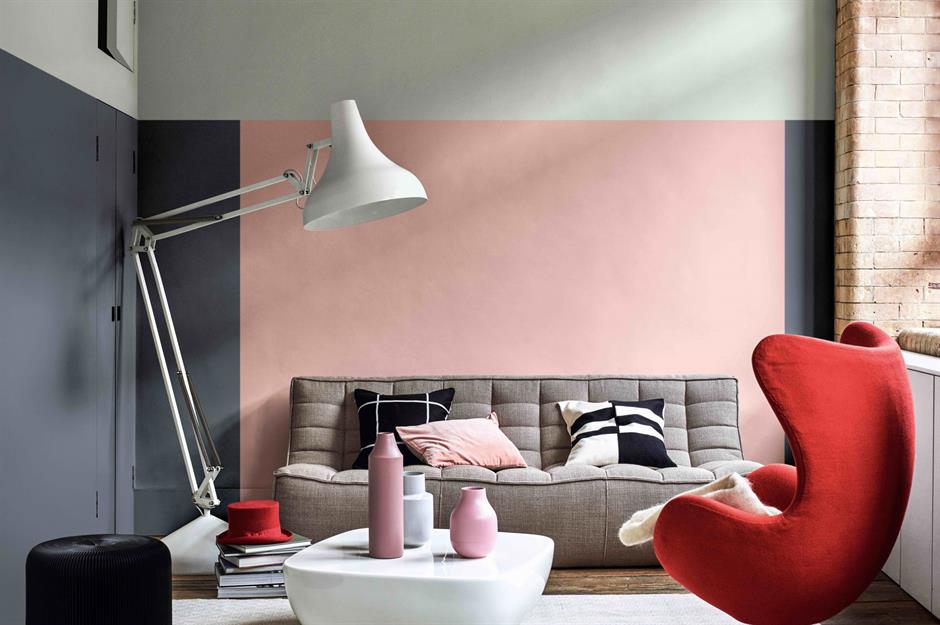
Block painting walls in contrasting colors alters the room’s sense of space, and you get the chance to add bright colors to your home. Be sure to use masking tape to tape down the sides of each block to get crisp demarcation.
20. Fireplace
However, if you think an entire wall is too bold for you, try painting a small portion of the room. For example, fireplaces are the perfect size to add pops of color to; it isn’t too small to “make a statement” but not too big that it scares you.
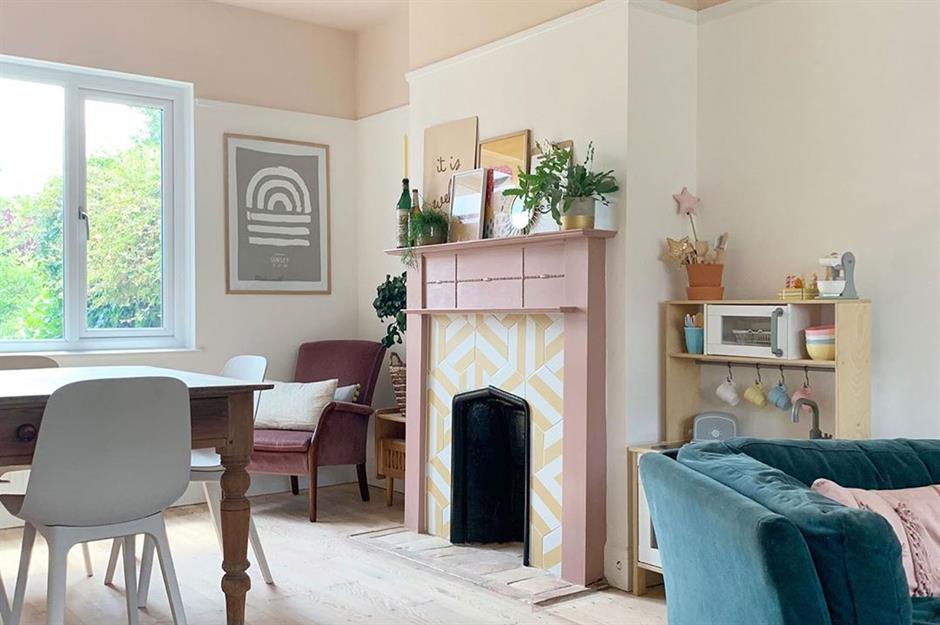
Brightly colored and textured fireplaces are trendy nowadays, and it is not too late to jump on the bandwagon. Decorate the top of the fireplace with small bits and baubles such as books, candles, and small plants to avoid the mantle looking too empty.
21. Touch of Wood
Conversely, wood is a great element to add to your room if it lacks warmth and character from the basic theme you’ve chosen. It is a terrific alternative to adding bright colors to your room which loses the minimalist touch.
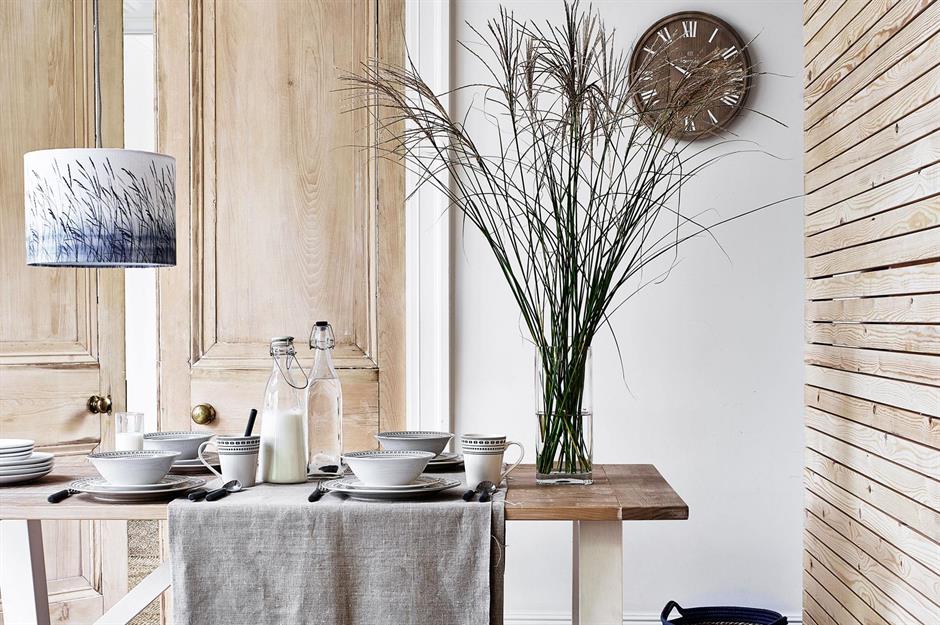
Wooden furniture, doors, and a 3D wall are a few examples of wood features you could incorporate in your space; sand these wooden features down to give the piece a more rustic look. This is also an excellent way to cut costs, as you can use upcycled wood.
22. 70-30 Split
If you think designing your home in a single color is too boring and ordinary for you, try this tip instead; go ahead and design 70% percent of your home in one style and the remaining 30% a completely different style.

This is a great way to balance two completely different sides of your personality in one room without blowing it out of proportion. With this trick, you get the best of both worlds. Or, in this case, the best of your top two designs.
23. Curves and Arches
Again, basic color schemes may cause a room to look too bland and can lack the homey essence it should have. Apart from adding splashes of color, you could play a little bit with the room by adding curves, circles, and arches.
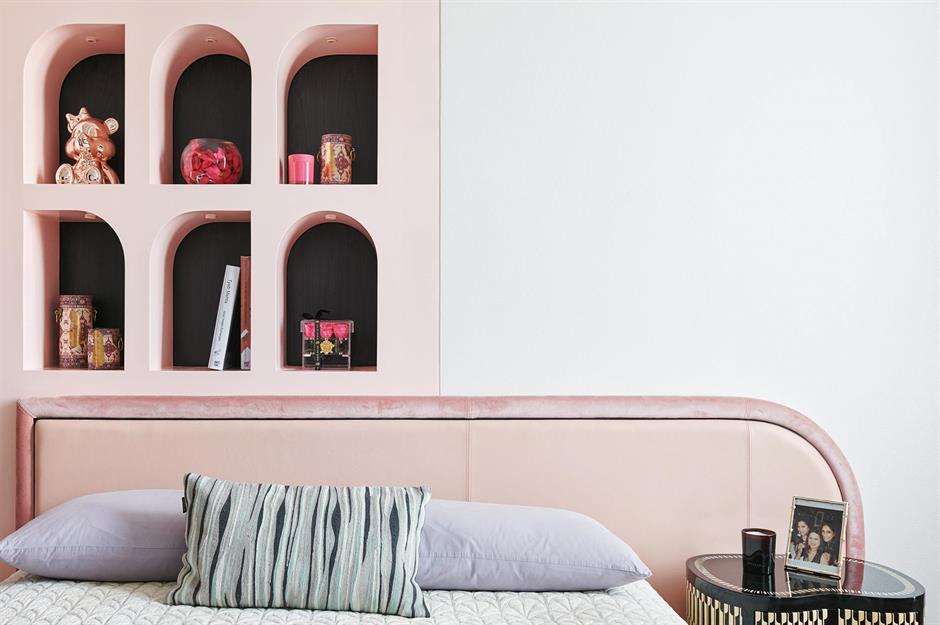
These are asymmetrical elements that are easy to incorporate into your designs. In the picture above, the designer transformed an ordinary storage space into a chic and modern shelving unit using curves and arches; they also upgraded the ordinary bed by putting in an asymmetrical headboard.
24. Non-Toxic Colors
So far, we’ve mentioned several ideas that involve the use of paint; with all these great ideas, it is easy to forget some of the other important factors when choosing suitable paint for your home. A few of these factors include health and environmental factors.
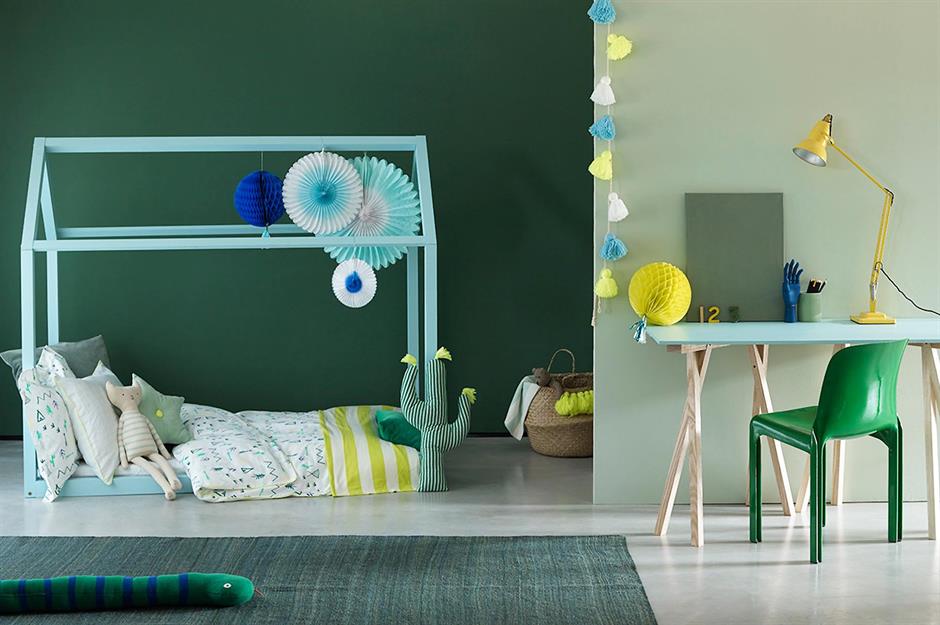
It is essential to factor in health and environmental issues when decorating a nursery or a child’s room. Be sure to use non-toxic paint for this space to avoid harming their health with the toxic materials in many regular paint cans.
25. Flooring – part 1
Next up is a general tip to make your humble home seem larger. Normally, we would put distinctive types of flooring in the different rooms in our home. However, this actually makes our home look smaller than it really is.
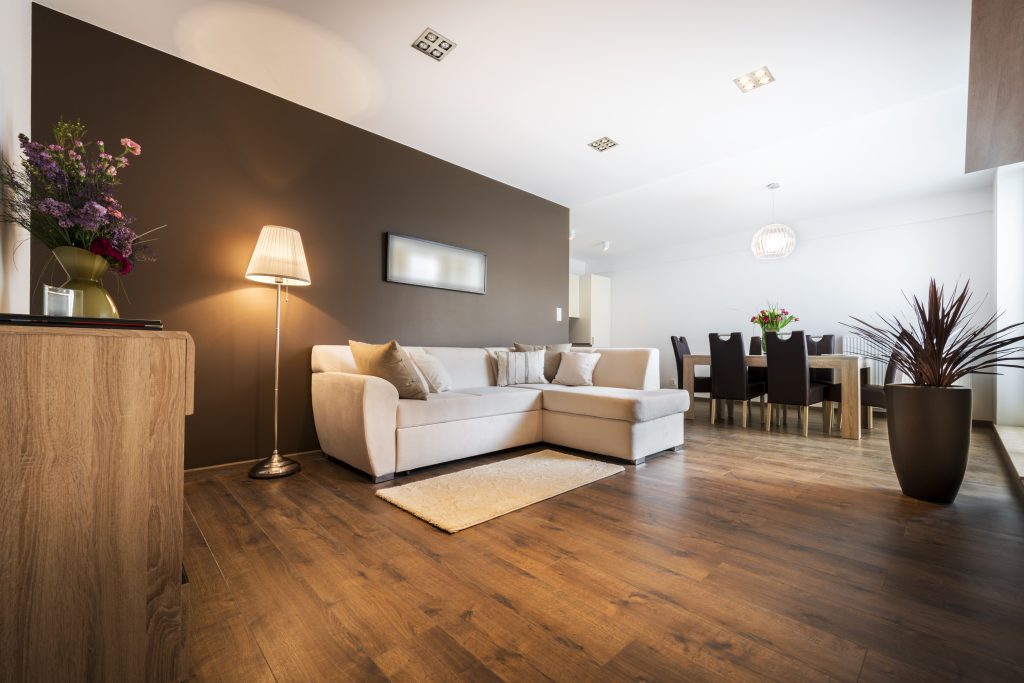
Therefore, use the same flooring for your entire home to make it look slightly bigger. For those who have homes with large, open-plan rooms, use rugs to break up the continuity; be sure to choose a rug that matches your theme.
26. Flooring – part 2
Flooring is often one of the last things to come to the minds of some homeowners who aren’t designers. However, flooring makes quite a big impact when it comes to designing your home; as mentioned above, flooring can make open spaces look bigger.
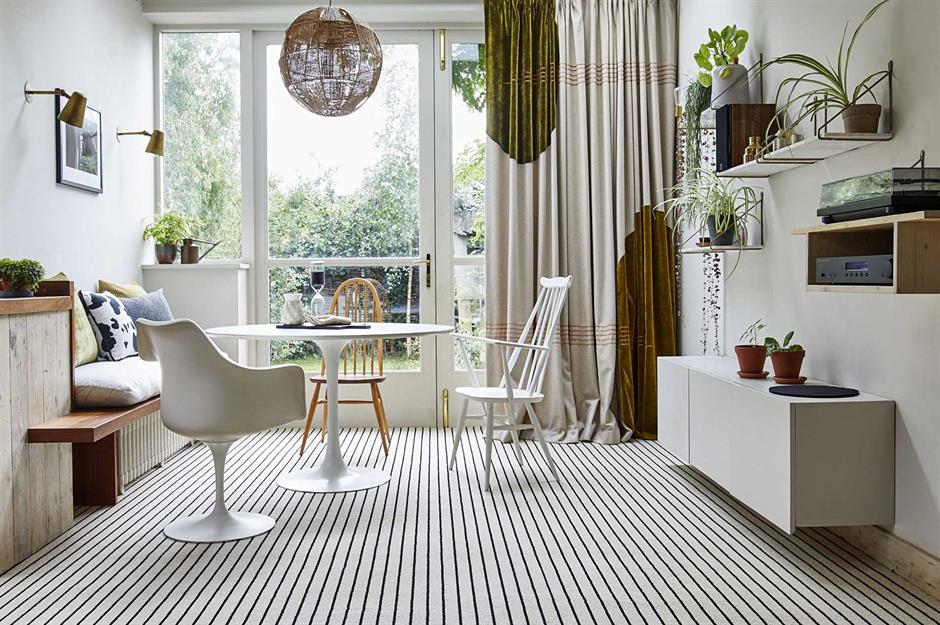
Another impact that floorings can have is drawing attention from the eye; a bold flooring pattern adds interesting elements to a boring room; remember to incorporate balance. The room would look too complicated with bold flooring patterns along with complex wall patterns.
27. Ceilings
Like flooring, ceilings are often forgotten until the end; most of the time, the ceiling is ignored and not decorated. However, ceilings could actually make quite the impact when done well. Take a look at this unconventional ceiling done by designer Crystal Sinclair.
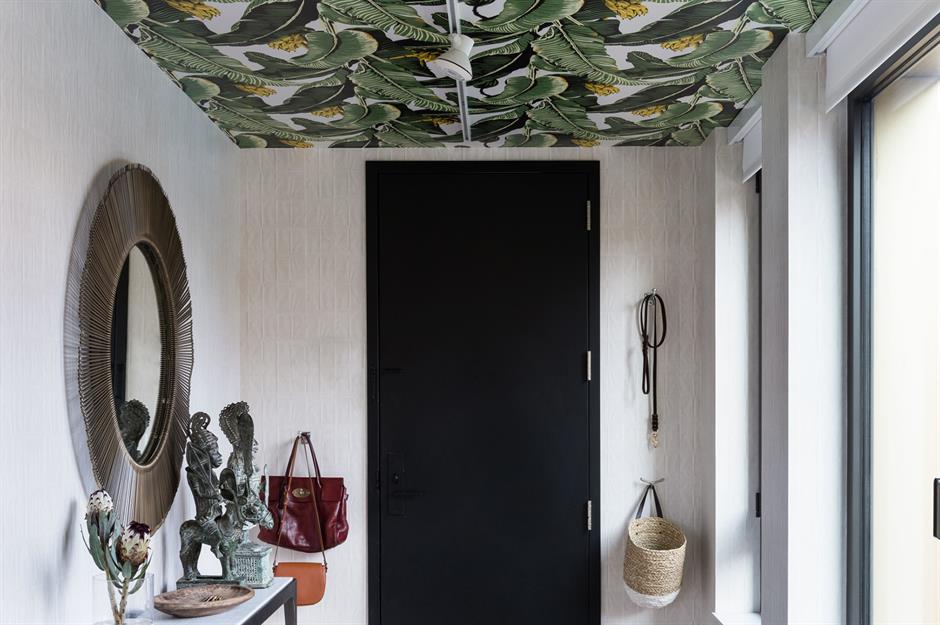
Painting the ceiling in a bold and bright color, adding a beautiful mural, or papering the ceiling is an excellent way to elevate a plain and ordinary room. Painting the ceiling in dark colors gives the room a cozy feel. Metallic paints or faux tin, on the other hand, gives the room an artsy vibe.
28. Rule of Threes
Decoration placements can feel overwhelming; too few of a particular decoration makes it look weird and does not blend in well, whereas too much of a particular decoration makes the space look messy and unpleasing to the eye. How do we find balance?
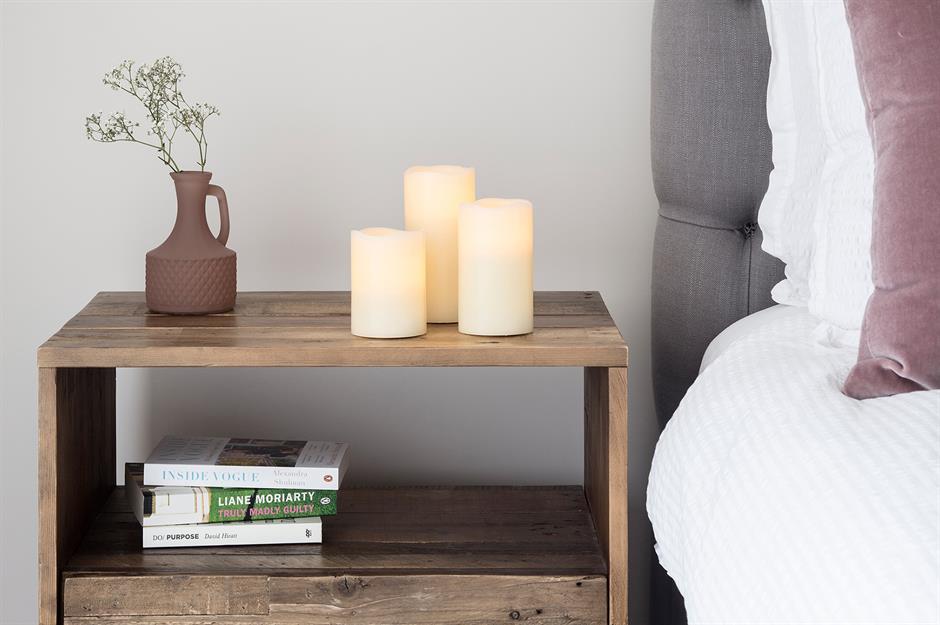
One easy rule to remember is the rule of three, or rather, the rule of odd numbers: place decorations in groups of threes, fives, etc. This tactic forces our gaze to move from one object to another and can be used on any object.
29. Old Furniture
Designing your home can be expensive with all the furniture, decorations, and labor you’re paying for. Therefore, if you went overboard with the budget, here’s somewhere you can cut costs. Decorations don’t always have to be new; you could reuse old furniture!
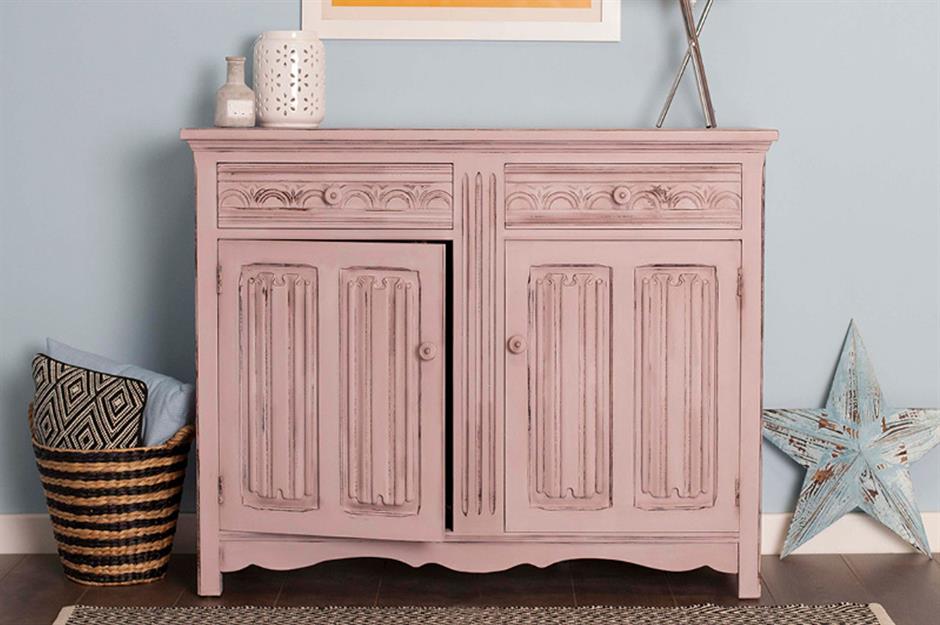
Transforming old furniture such as cupboards into decor adds a vintage feel to your home. Additionally, it can give you additional storing space. Just give it a new coat of paint so it will fit perfectly into your new theme.
30. Designer Pieces
Conversely, if you’re willing to set a higher budget for designing your home, do invest in a few designer pieces. These pieces only get better with age and make any room look chic and modern, making each one a good investment.
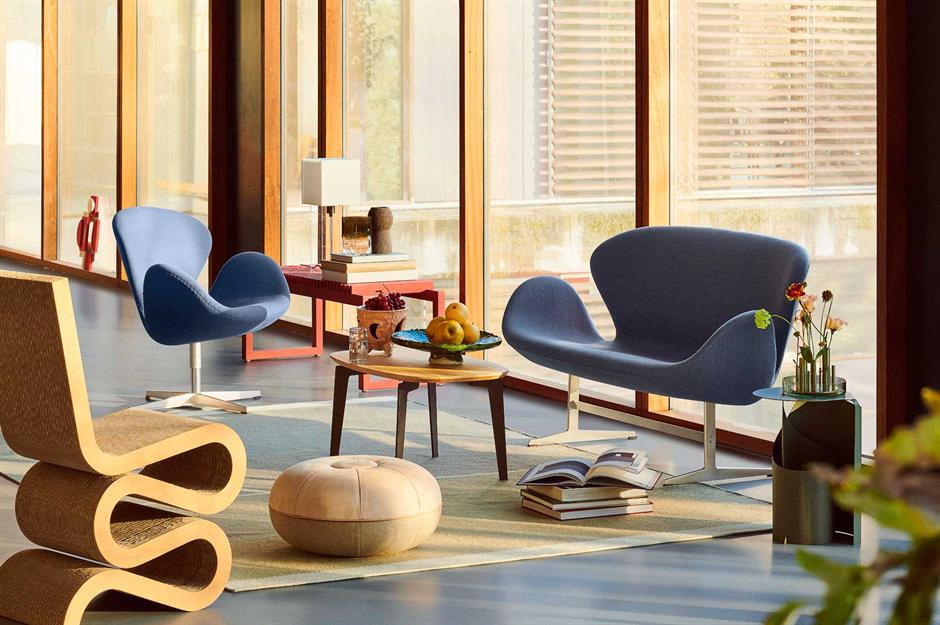
If you’ve decorated your home with basic themes, this is another great way to add a little pizzazz to your living space; designer pieces stand out and become the focal point of a plain room. They give you and your guests something interesting to look at.
31. Oversized Wall Art
Alternatively, oversized wall art makes quite the statement in a basic-themed home. The bigger the art, the better it looks, as it gives off a minimalist vibe. Or, you could build a gallery wall out of multiple small pictures (more on that later).
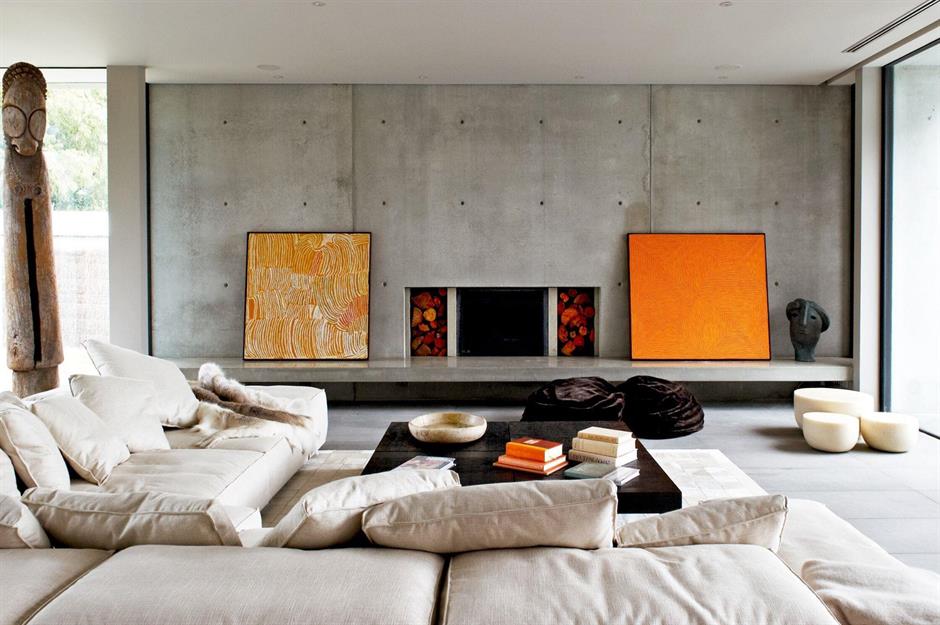
Take inspiration from this scheme by Rob Mills Architects, which places two large paintings that complement each other next to a fireplace in the middle of the living room. Unfortunately, large wall art can be pretty expensive, so check out the next idea for another option.
32. Map Out Gallery Wall
Gallery walls are made out of multiple pieces of smaller art displayed on an emptier wall in your home. Sadly, even professionals have a hard time putting together an Instagram-worthy gallery wall. But if you’re up for the challenge, start by mapping out the space first.
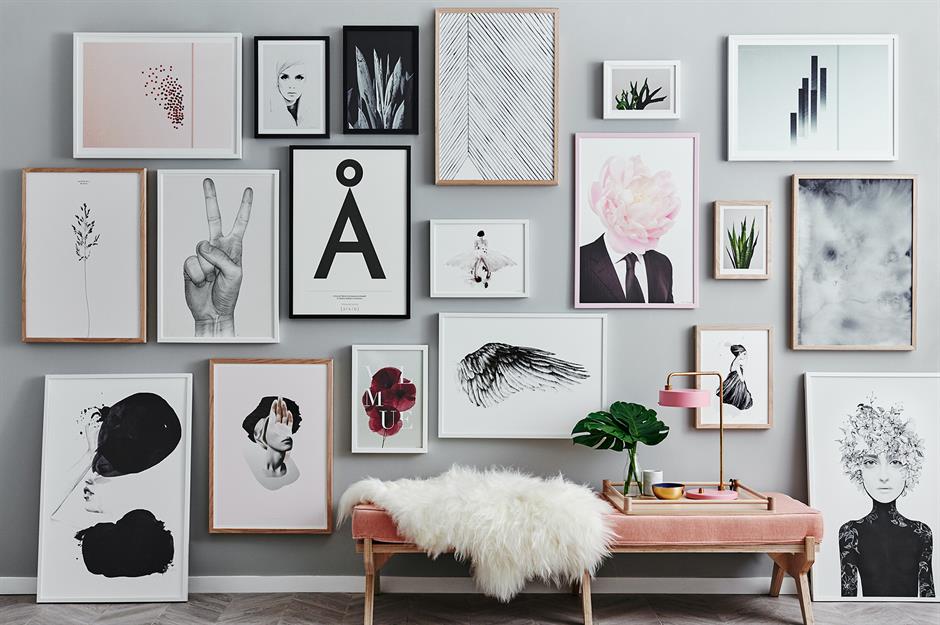
To do this, first cut pieces of cardboard the size of each one of the pieces you want to hang on your wall. Next, arrange the cutouts on the wall with some sticky tac until you find the perfect arrangement.
33. Standout Details
Another slightly cheaper option to incorporate art into your home is to create standout details with paint. This idea does challenge the artistic side of you, but it costs way less than designer pieces, oversized wall art, or gallery walls.
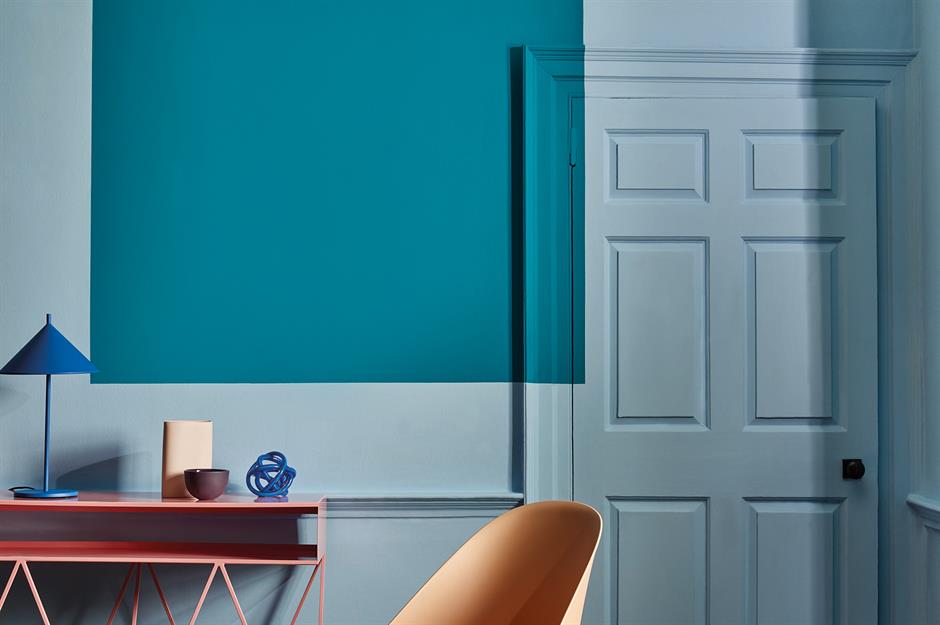
Try creating standout details by painting different shapes on the wall, as shown in the picture above, or paint a mural or freestyle monochrome dashes. There are numerous ways to incorporate art with paint; try to think outside the box.
34. Cozy Nooks
We’re sure that many of you homeowners face the most difficulty when it comes to designing those awkward areas; these are the areas in your home that are oddly shaped and hard to decorate because of the angles it has.
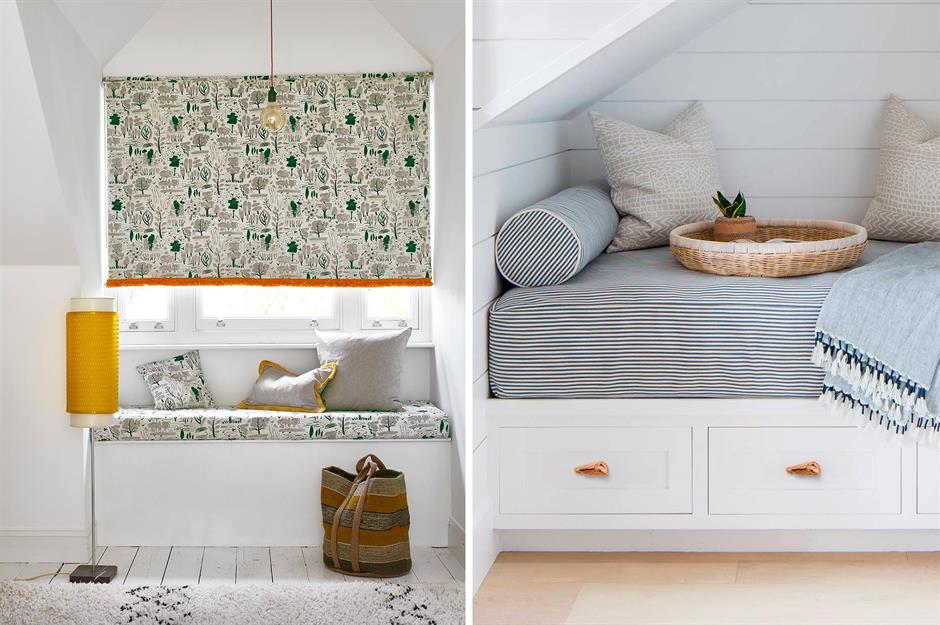
Here’s a suggestion for what to do with these awkward spaces: turn them into cozy nooks to chill in. You could put in a window seat or a very comfortable sofa, throw some soft blankets and pillows and turn it into a reading area.
35. Stools
Another option for transforming those weird areas into cozy nooks is to place a simple stool in there. Stools should be your best friend; they can be placed basically anywhere. They are easy to tuck away and serve as useful pieces of furniture.
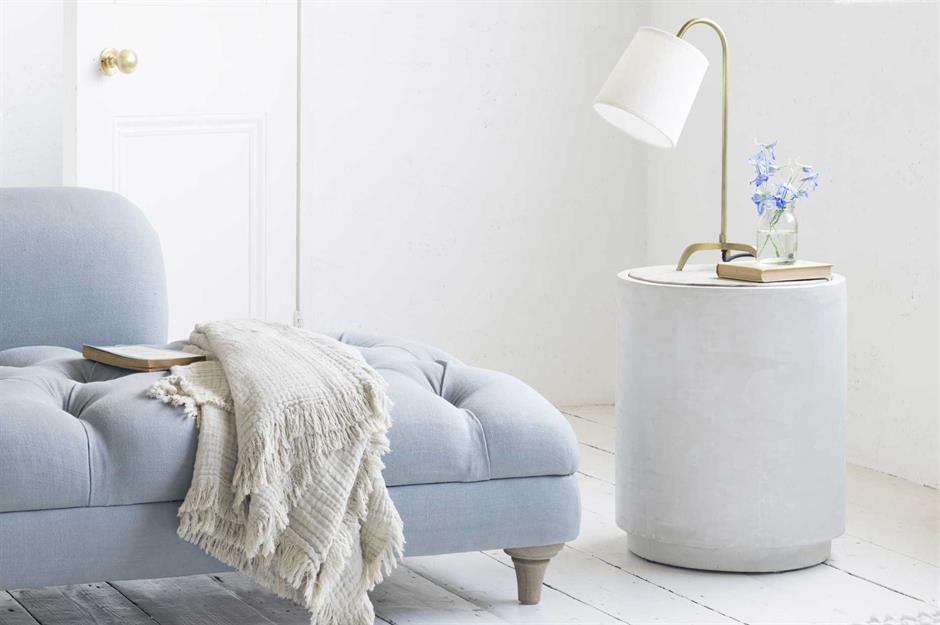
When your friends or family come over, stools can be used as seating. Options with a lid could make for a small storage space. You could even replace your conventional bedside tables with stools! If you’re done with it, you could store it away without taking up much space.
36. Fight the Urge
Although we’ve suggested ways to use those awkward corners of your homes, it is not always necessary to use up all the space in your home; using up every available square inch may make your home seem cluttered and messy.
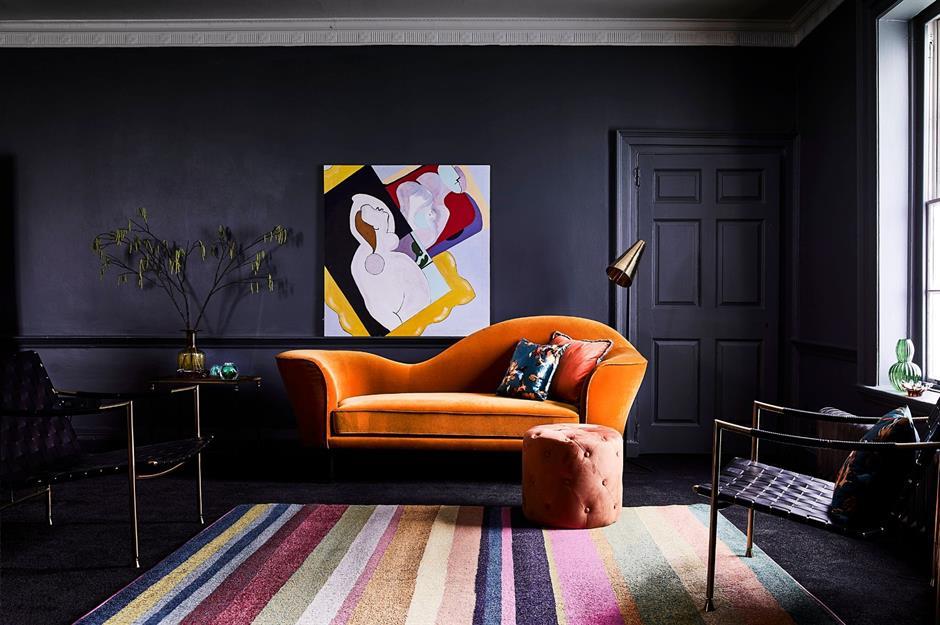
It’s best to leave a few of your walls and shelves free; this would ensure that you have enough space to “breathe.” One tip for the illusion of a larger space is to paint the walls and doors the same color.
37. Styling Bookshelves
If you’re someone who loves to read, you must have numerous books sitting on your bookshelf; we all know that the bookshelves could look really messy if they were used merely for the purpose of storage. Thus, combine the purpose of decoration and storage for a prettier display.
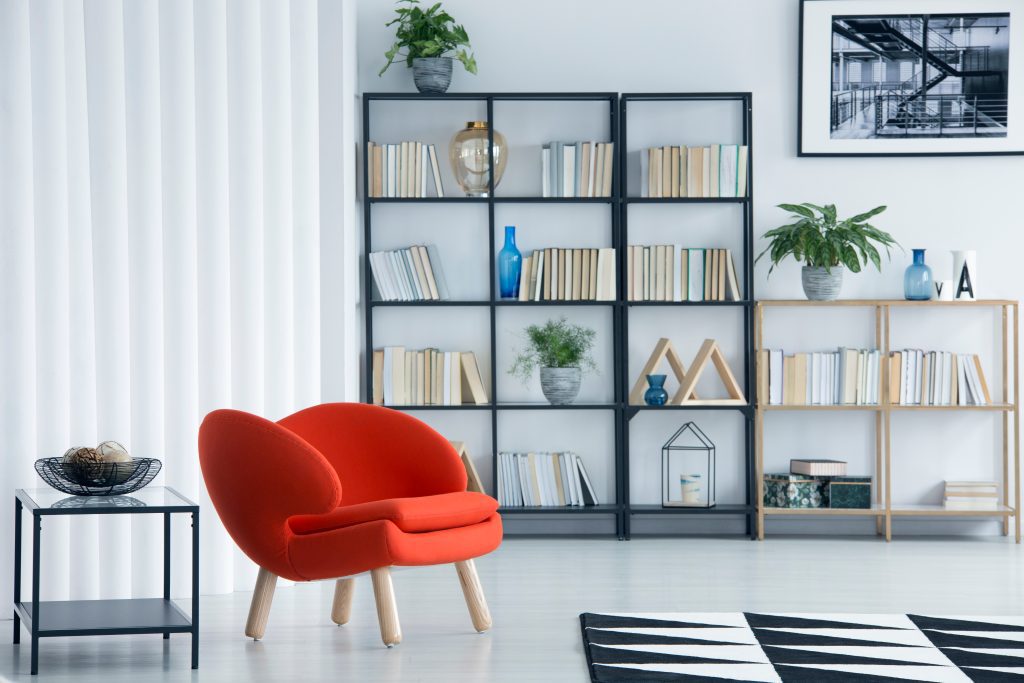
The first tip to remember is to not overcram one bookshelf. Next, choose items of similar color schemes to place on the shelves, recall our earlier tip of groups of three, and place the decorations in odd numbers. Finally, the bookshelf should consist of 30% decorations and 70% books.
38. Seasonal Decorations
Are you someone that gets bored looking at the same decorations all year round? Or your home is lacking some embellishments, and you do not know what to do? Either way, try switching out or adding some seasonal decorations when the time comes.
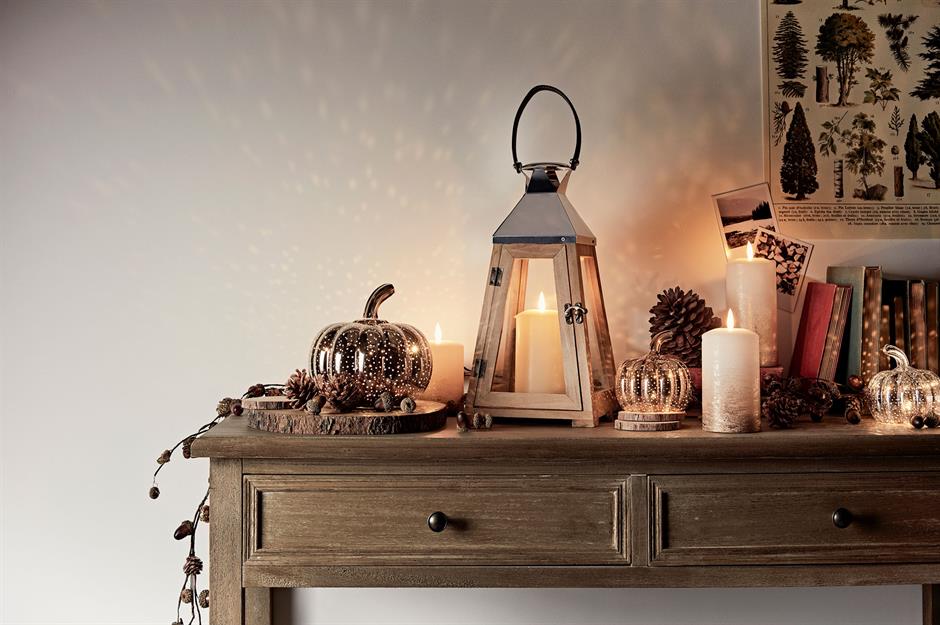
Homeowners often decorate for Christmas, Thanksgiving, and Halloween because it helps put them in the holiday mood. But some homeowners decorate for Spring, Summer, Autumn, and Winter. Pinterest is a great source of inspiration if you don’t know where to start.
39. Dress Up Your Bed
Some bedrooms are so small that they only fit a bed, a bedside table, and a dresser; it is challenging to decorate this space because there is none left. Therefore, the only area left free to decorate is your bed.
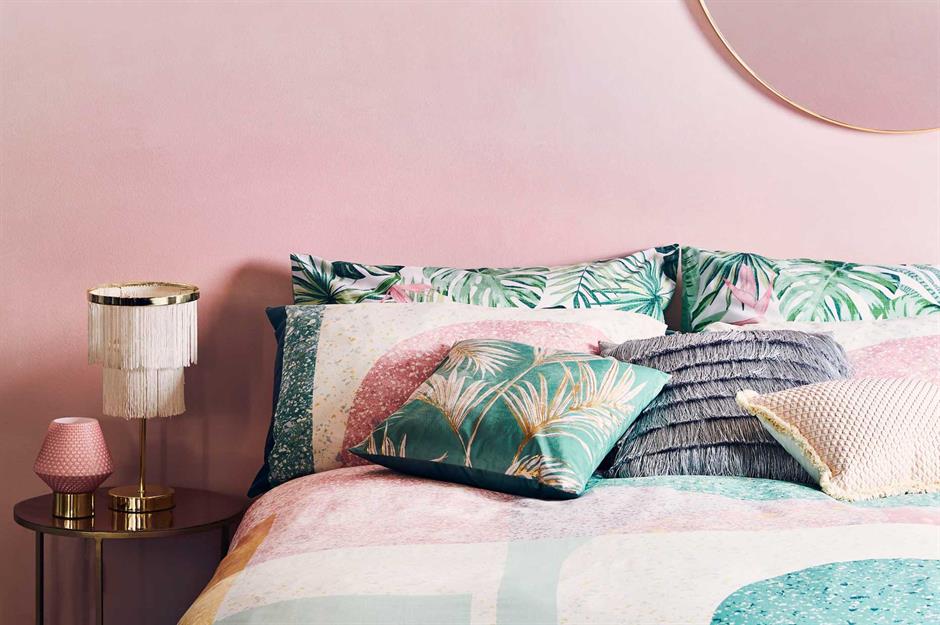
Dressing your bed up with linen and pillows is a great way to showcase your personality, just as decorations would if you had the space to use some. As a bonus, these can be easily switched out as your mood changes.
40. Bathroom Wallpapers
Conventional bathrooms are lined with tiles. However, this isn’t the only way to decorate your bathroom. Traditional tiles can be replaced with wallpaper instead. This is where you can use those bold and full of character patterns you dare not use elsewhere.
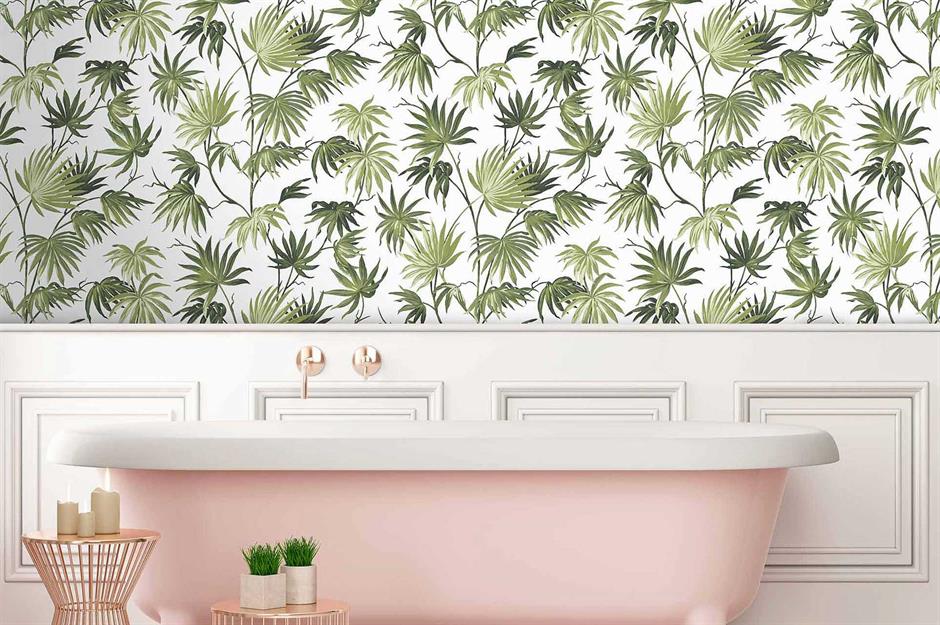
Large prints in a small area look especially striking, so go bold and be fearless with this! In a way, bathroom wallpapers showcase your most spontaneous and wild inner-self. Keep in mind to choose a material that is humidity and water-resistant.
41. Bathroom Floor and Wall Tiles
There are often leftover floor tiles. We believe you’re scratching your heads about what to do with them; try using floor tiles as wall tiles for an easy solution. No one would care that you could use floor tiles in one room and put them as wall tiles in another room!
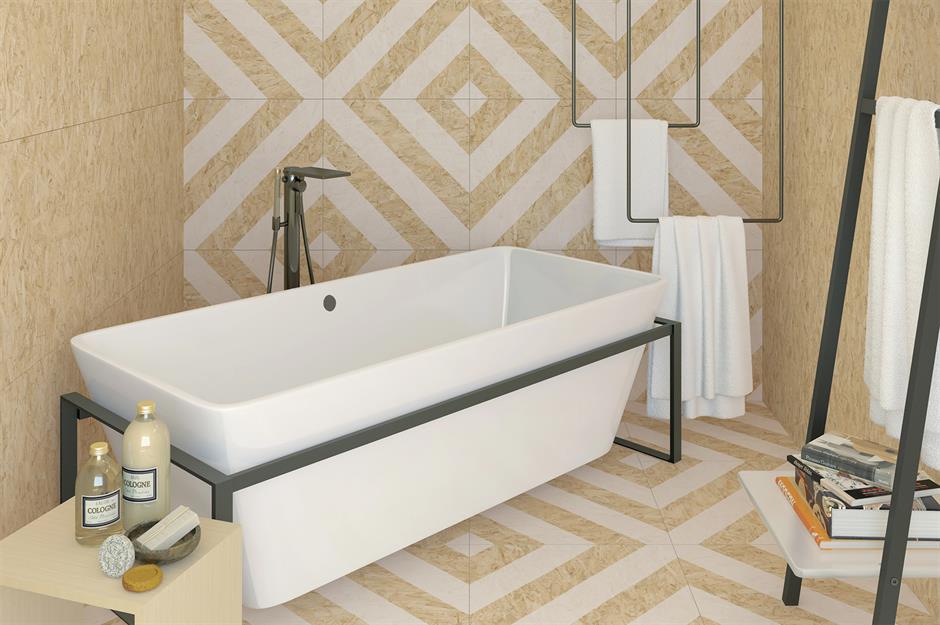
Alternatively, use the same tiles for both your bathroom floors and wall. Bringing the tiles from the floor to the wall gives your bathroom a look that stands out and is interesting to look at. It’s possibly a better idea than bathroom wallpaper for you.
42. Golden Ratio
When planning furniture placement and decorating your home, you must follow the golden rule. This is used by many professional interior designers and is the key to designing a well-balanced and harmonious room that is pleasing to look at and live in.
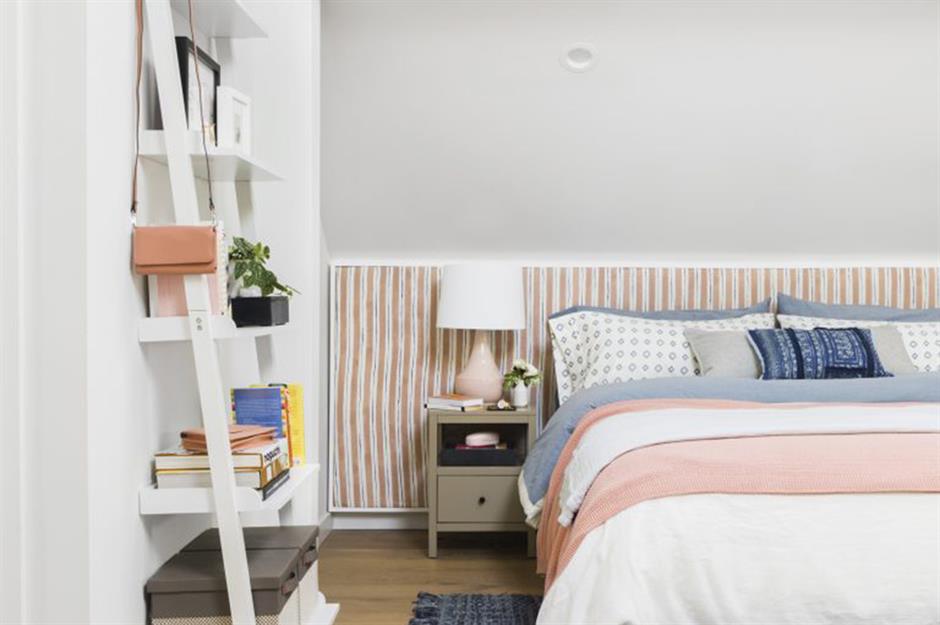
The golden rule is dividing any space you want to decorate into two sections. The first section should be two-thirds of the entire room and the second section the remaining of the room. The picture above shows Sara Tramp’s take on this, shared on designer Emily Henderson’s website.
43. Use Up Whole Room
One common thing that almost everyone does is line the sofas along the walls. If you’re lacking living room space, this is a great placement. However, it is better to put the couch in the middle of the room if you have a slightly larger area.
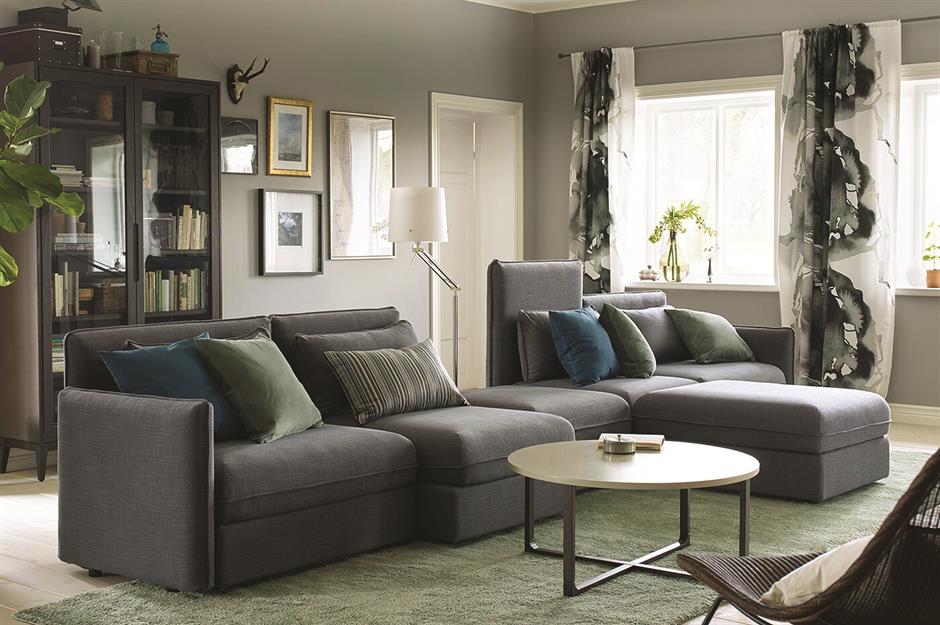
This furniture placing works well in larger spaces because all the furniture is gathered in the center of the room rather than placed in two ends of the room; this makes your living room look cozier and allows it to have a more sociable seating space.
44. Center of Attention
Large living spaces can be difficult to design, especially if you’re working with a blank canvas. If you don’t like how the first furniture placement turned out, it’d be a hassle to move everything around, and it could ruin your new flooring!
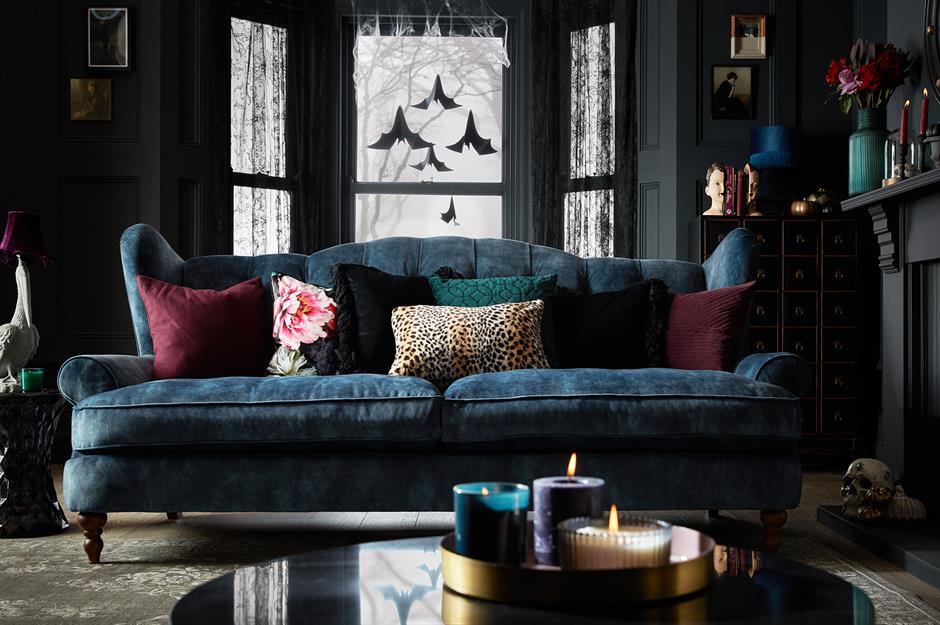
Therefore, start with the sofa placements; they are the largest piece of furniture in a living room, and it’d be easier to plan around that instead of the coffee table. This does not only work for living rooms but should be used in every area of the home.
45. Right Rug
For large living spaces, rugs are one important element that ties it all together. But you should find a carpet that is the perfect size for you living space; too small or too big could potentially ruin your entire scheme.
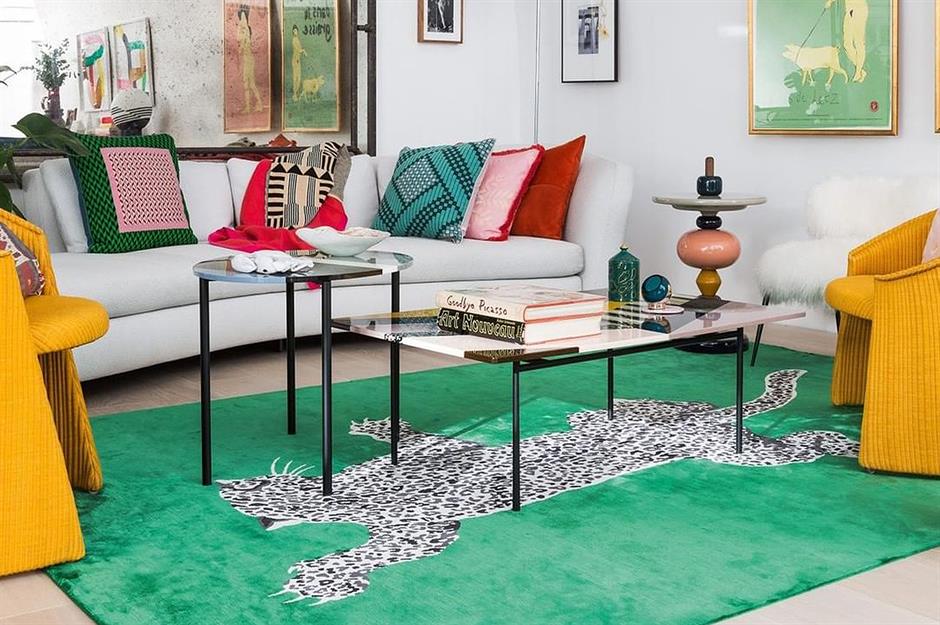
The ideal rug size should have all or some of your furniture legs sitting on it. In a dining area, all four of your chair’s feet should be on the rug. Consider some unconventional uses of rugs, such as placing one on top of another or using them as wall hangings.
